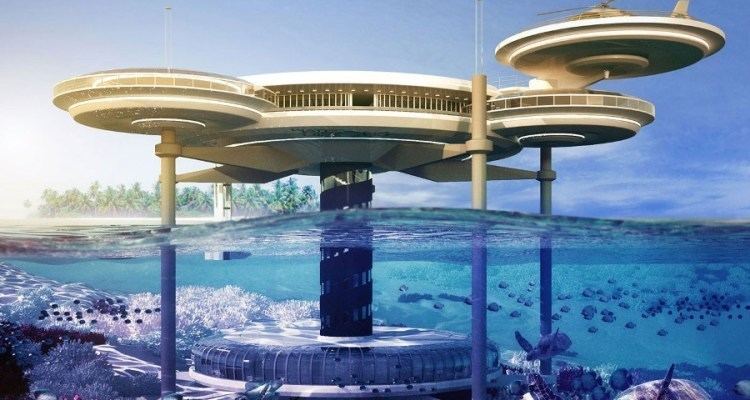 | ||
Similar Dubailand, Dubai Sports City, Jules' Undersea Lodge, The World, Dubai Waterfront | ||
The hydropolis underwater luxury boutique hotel mov
The Hydropolis Underwater Hotel and Resort is a proposed underwater hotel in Dubai. Hydropolis should be the first multi-room underwater hotel in the world. It was planned in the Persian Gulf of Dubai through the mediation of Mr. Hans Peter Pesenhofer, following plans of Siemens IBC (Prof. Roland Dieterle) in cooperation with the German Designer Joachim Hauser and with the approval of the DDIA (Dubai Development & Investment Authority). The hotel's original plan was to be located 20 meters (66 ft) underwater off the coast of Jumeriah beach. The hotel's plan is to cover an area of 260 hectares (640 acres), which is equivalent in area to Hyde Park in London. The construction cost for Hydropolis is approximately €600 million Euro, which will make Hydropolis one of the most expensive hotels ever created. The hotel design was created by Professor Roland Dieterle and Joachim Hauser, and is planned to be composed of three segments: a land station, a connecting train, and the underwater hotel. Joachim Hauser's and Prof. Roland Dieterle's architecture idea is to represent the connection between humans and water. The initial planned opening year was 2006, but due to financial reasons and disagreements with the DDIA (Dubai Development & Investment Authority), the project was canceled by the DDIA already on November 23, 2004. Hydropolis Holdings LLC Dubai was holding the original intellectual property rights of Hydropolis.
Contents
- The hydropolis underwater luxury boutique hotel mov
- Hydropolis underwater hotel dubai
- Layout
- Land station
- Power and tunnel
- Cars and logistic Systems
- Underwater hotel
- Architecture of the underwater hotel
- Cost
- References

Hydropolis underwater hotel dubai
Layout
The Hydropolis will be composed of three segments: a land station, a connecting train, and the underwater hotels.
Land station
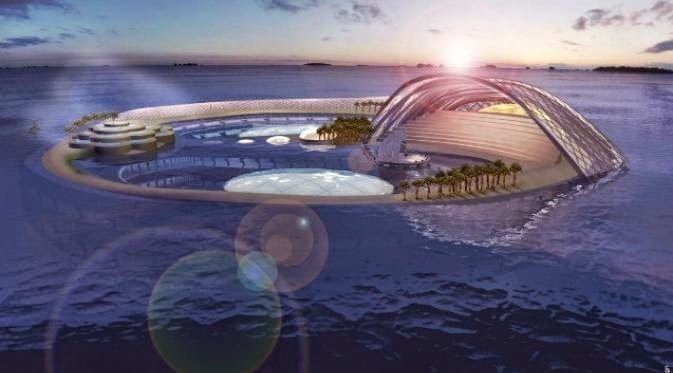
The design of the land station is a wave-shaped 30,000 square meter building. The purpose of the land station is to provide a place for guests to board the soundless train to descend into the hotel. Secondary purposes for the land station include greeting guests, and use of the land station's facilities. The land station is planned to feature many facilities, including a marine research laboratory, a plastic surgery clinic, conference facilities, a restaurant, and a theater. The theater is intended to feature films about the evolution of life and about the history of underwater architecture.
Power and tunnel
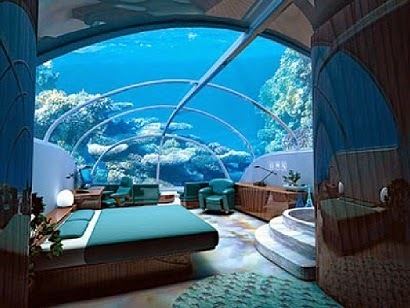
The noiseless train will be located in a 515-meter-long (1,690 ft), transparent, double-track tunnel, made of plexiglass reinforced with concrete and steel. This train will be powered by an automated cable propulsion system. This automated cable propulsion system consists of a stationary motor and cables with the train cars fixed to the cables. The stationary motor for the train system will be located in the land station, and will be connected to cables running down the length of the tunnel. The cars, fixed to these cables, will be moved up and down the tunnel solely from the power of the land motor. This system is advantageous because separating the motor from the train cars will decrease noise in the tunnel. This decreases noise because the motor is the main source of noise in this train system. With the motor separate from the train cars, noise in the cars and tunnel will be minimized. Another advantage of this system is that a separate motor results in less mechanical parts in the car, which also mean less repairs on the actual train cars.
Cars and logistic Systems
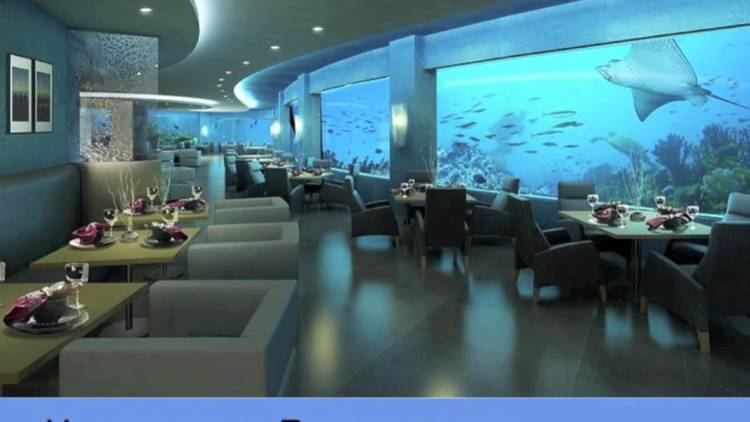
Rubber wheels were chosen over other types of wheel, such as steel, to minimize noise. Rubber wheels have a property of making little noise as they roll on surfaces such as plexiglass. The noiseless train will serve two purposes, transferring guests and supplying the underwater hotel. Supplies will be packed on land, and delivered efficiently to the hotel to minimize the space taken up by goods in the hotel. Cars transferring supplies will feature palettes, and cars transferring passengers will provide a view of the ocean. The guest transporting aspect of the train will have a maximum efficiency of 1000 people per hour.
Underwater hotel
The underwater hotel will be a jellyfish like structure The underwater hotel will be located 20 meters underneath the surface of the ocean. To handle the underwater pressures, the hotel's main structure is a dome composed of plexiglass, reinforced with concrete and steel. The underwater hotel will be composed of 220 underwater suites with a cost of $5500 per night. In addition to the underwater suites, Hydropolis is planned to have many other underwater accommodations including restaurants, a spa, a cinema, a ballroom, and bars. The underwater hotel is planned to not only be a place for regular guests, but also a place for visitors to explore. In addition to regular guests, the underwater hotel expects 3,000 visitors per day.
Architecture of the underwater hotel
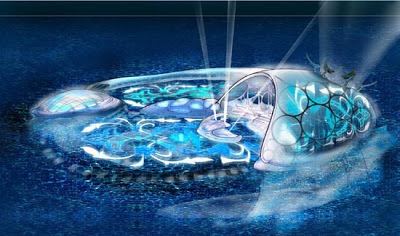
The inspiration for the architecture of Hydropolis came from Joachim Hauser's and Prof. Roland Dieterle's belief in humanity's inseparable connection with water. Their belief stems from the fact that 72% of the human body is composed of water. The main structure of the Hydropolis is the Lemniscate, a symbol of wisdom. The Lemniscate looks like a figure 8 on its side. To make the connection between Hydropolis and the human body, Hauser and Prof. Roland Dieterle made the different structures of the Hydropolis represent different parts of the human body. Some of the parts represented in Hydropolis are the nervous system, cardiovascular system, and the sinus node. Hauser and Prof. Roland Dieterle put a special emphasis on the sinus node by placing it in the center of Hydropolis. Hauser and Prof. Roland Dieterle did this because the sinus node is the heart's pacemaker.
Cost
Cost is a problem facing the Hydropolis. Funding for Hydropolis is being handled through the Dubai Development and Investment Authority (DDIA). However, as of November 23, 2004 the agreement with DDIA has lapsed. Until this time only 20% of Hydropolis funding has been achieved.
